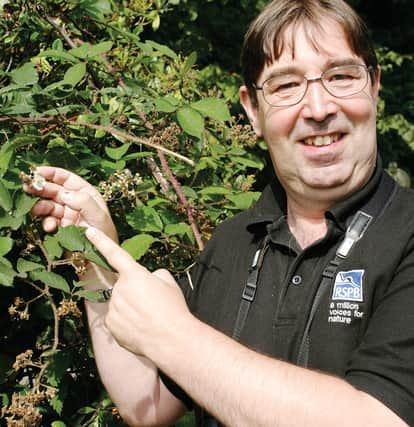Rare bumblebee found in Rotherham churchyard


Steven Rutherford spotted the tiny bumble bee in Thorpe Hesley churchyard.
Steven (52) said: “I was really pleased to spot the bumblebee, especially at the churchyard which is in a conservation area, so this just proves it is working.
Advertisement
Hide AdAdvertisement
Hide Ad“The bee was around on some bramble. I took a closer look and knew what it was immediately. The tree bee can be identified by its ginger colouring and black tail with a white tip.
“It’s quite a small one and it’s unusual as lots of them nest in holes on the surface of trees. I took a photo of it as I knew it was going to be rare.”
Steven, who works as an information officer at the Old Moor RSPB Nature Reserve in Wath, had his find confirmed by the National Bee Conservation Trust.
He added: “I’d been looking for one at the Old Moor where I work as there are six different kinds of species there.
Advertisement
Hide AdAdvertisement
Hide Ad“I’m waiting to find out if it’s the first sighting in South Yorkshire.”
The UK currently has 24 bumblebee species and within the last 70 years two species have become nationally extinct.
A further six have been recognised as in need of conservation action.
The National Bumblebee Conservation Trust had put out a plea asking people to be on the lookout for the rare bee, which first arrived in Dorset from France in 2001.
Advertisement
Hide AdAdvertisement
Hide AdNatasha Rolph, education officer for the NBCT, said: “Back in 2001 we found a new species for the UK and now, nine years later, the tree bee has once again got us buzzing because it’s doing something really unusual.
“This year many people have reported seeing a cloud of males dancing at the entrance to the nest.
“We think these are males from other nests nearby which are hanging around in the hope of pouncing on a virgin queen as she emerges from the nest.
“We’re working to track this bee as it expands its range, which it seems to be doing quite rapidly.
Advertisement
Hide AdAdvertisement
Hide Ad“We’d love to hear from you if you see it and we’d also like to know how common this behaviour is. It’s possible that the tree bumblebee has been doing this for years, but perhaps we just hadn’t noticed before.
“We really need to see a photo in order to use your records on the distribution maps because it’s very important that these are as accurate as possible.”
For more information visit www.bumblebeeconservation.org